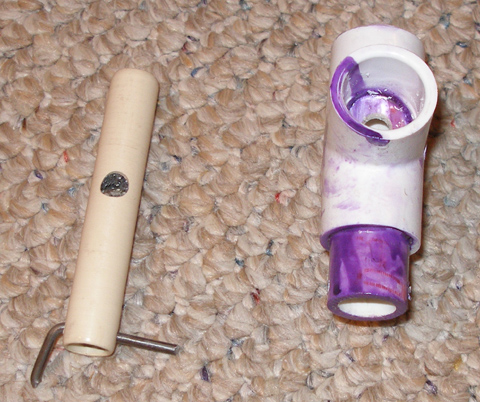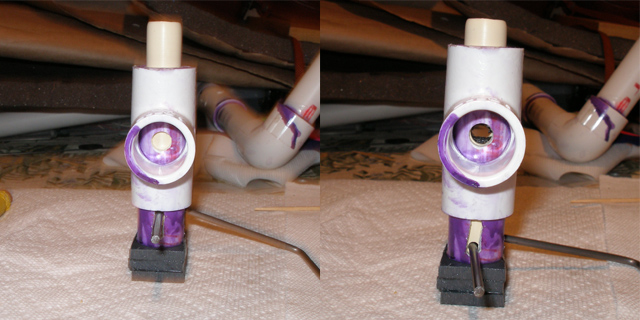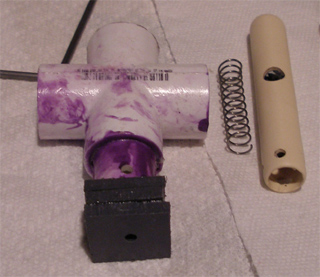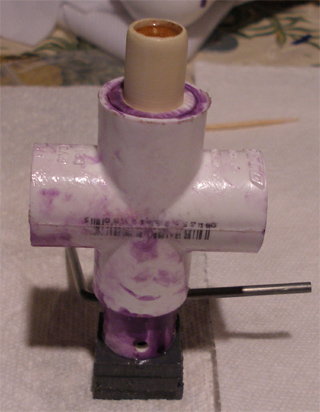Ben wrote:Drenchenator has been working on a type of pull valve with mixed results. It's not at all like what I described and is a completely new valve design. It needs some bugs worked out definitely, but right now it is functional. I'll leave posting about it to him.
The valve that Ben described is truly a completely new kind of valve. I don't have a good name for it; Until I do, let's call it a "new linear flow valve." I wasn't planning on posting it until my CPS homemade was done, but it works and Ben "burst the bubble."
A few people have tried to build homemade pull valves with limited results. Ideally, a valve should provide linear and then laminar flow; a pull valve does not. I built this out of a desire for a "homemade linear flow valve."

The valve works like a ball valve; however, instead of a ball with a hole in it, a cylinder with a hole is used. The cross contains a section of 1/2" PVC to house the cylinder.

The bottom section houses a spring to push the cylinder out of alignment when the valve is not activated. I have a video showing the valve's assembly and function but it is too large (~60 MB) to post.
This valve was having "mixed results." Though it closes beautifully, I was unable to finish the trigger system to attach it to my homemade. I just ran out of time to complete it over the summer again. Secondly, my bad homemade test cylinder does leak. I used foam backer rod to fill some 1/2" CPVC to make it. Without a lathe, my sanding could only approximate the correct size. Ben recommended that I use 5/8" rubber rod for the cylinder and I have to agree. 1/2" PVC has a diameter of .622", 5/8" rubber rod has a diameter of .625". Plus, most seals are made of rubber anyway.
Edit: Changed tee to cross.
The valve animation

More pictures



